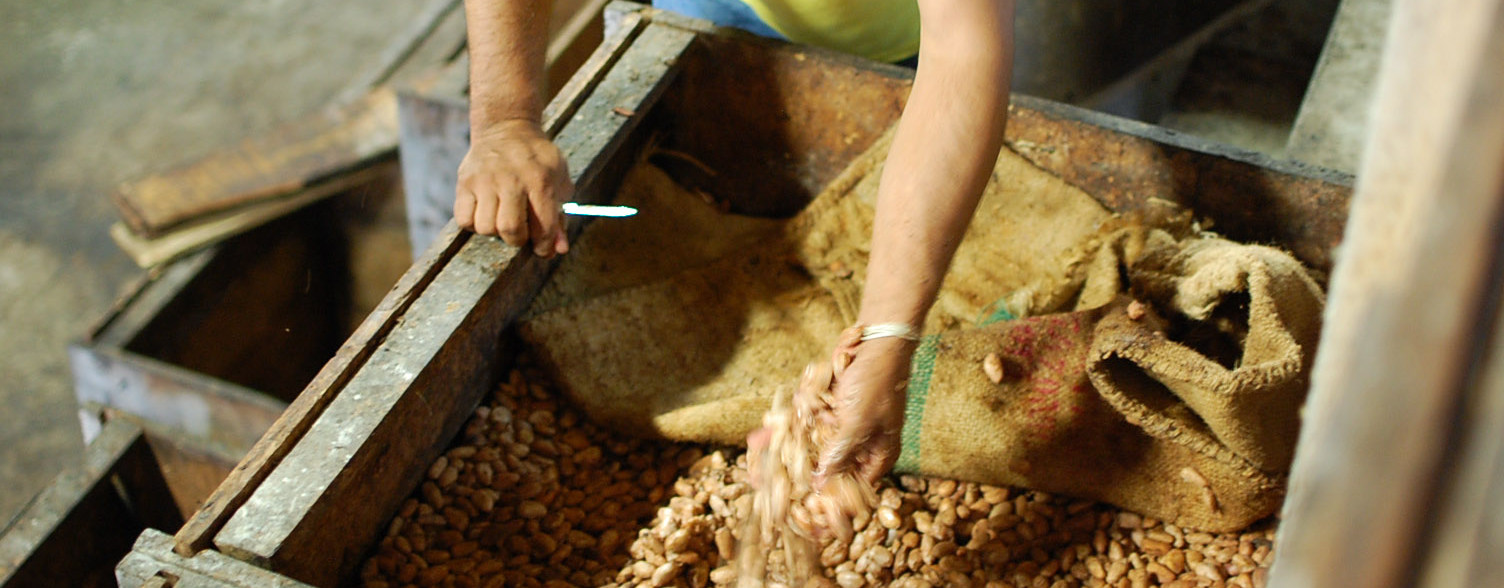
Cocoa beans are the seeds of the Cocoa Tree and are hidden in its fruits, which are large pods growing directly from the trunk and branches of the Cocoa Tree. Let’s have a look at production in the Vinces area of western Ecuador. It operates on the basis of a cooperative that buys cocoa beans from the smallest local farmers. They specialize in the Arriba variety of cocoa, ie. the premium cocoa class.
They bring their production to a collection point, where fermentation and drying take place, so that quality control in these processes is already under the control of the cooperative. The cooperative has many certificates, which binds them to take only such production that is in accordance with them. This guarantees the principle of Fairtrade, Organic and other qualitative aspects.
Fermentation
.jpg)
Fresh cocoa beans are still coated with pulp juice and taste very bitter at this stage. A fermentation process must take place to develop the chocolate taste and aroma.
The picture shows cocoa seeds in wooden crates in which fermentation processes take place. The seeds are covered with cloth or sacks and the fermentation is on for about three days. Do you see the knife in the right hand in the photo? The worker occasionally cuts the seeds and checks the inside for the presence of mold and quality in general.
And beware – fermentation transforms cocoa seads into beans! The difference between a seed and a bean is that the seed is fertile, has a germ and can grow into a new cacao tree. However, the germination disappeared during fermentation and the bean has no more agricultural use – nothing will ever grow out of it again. But it tastes great!
Drying
-2.jpg)
The beans are then placed on a concrete surface or on sugar cane bast mats and allowed to dry in the sun or under a roof to keep them from getting wet. Sometimes it is necessary to turn them and aerate, which is done by hand with large rakes, as shown in the photo. This is specifically Renato, a quality supervisor and occasional guide to the plantation.
Arriba is never dried in machine dryers, as is common in African plantations, for example, where mass production does not allow the luxury of several days of drying. However, sudden changes in temperature do not have a good effect on virtually any biological production, and cocoa degrades significantly in this way. The taste is then caught up in sugar and various flavorings, and in this way cheap, average chocolate is created.
Properly dried beans are bagged and are ready for sale, export or further processing, eg. for the production of cocoa mass, cocoa butter or cocoa powder.
.jpg)
Itís hard to find experienced people about this subject, however, you sound like you know what youíre talking about! Thanks